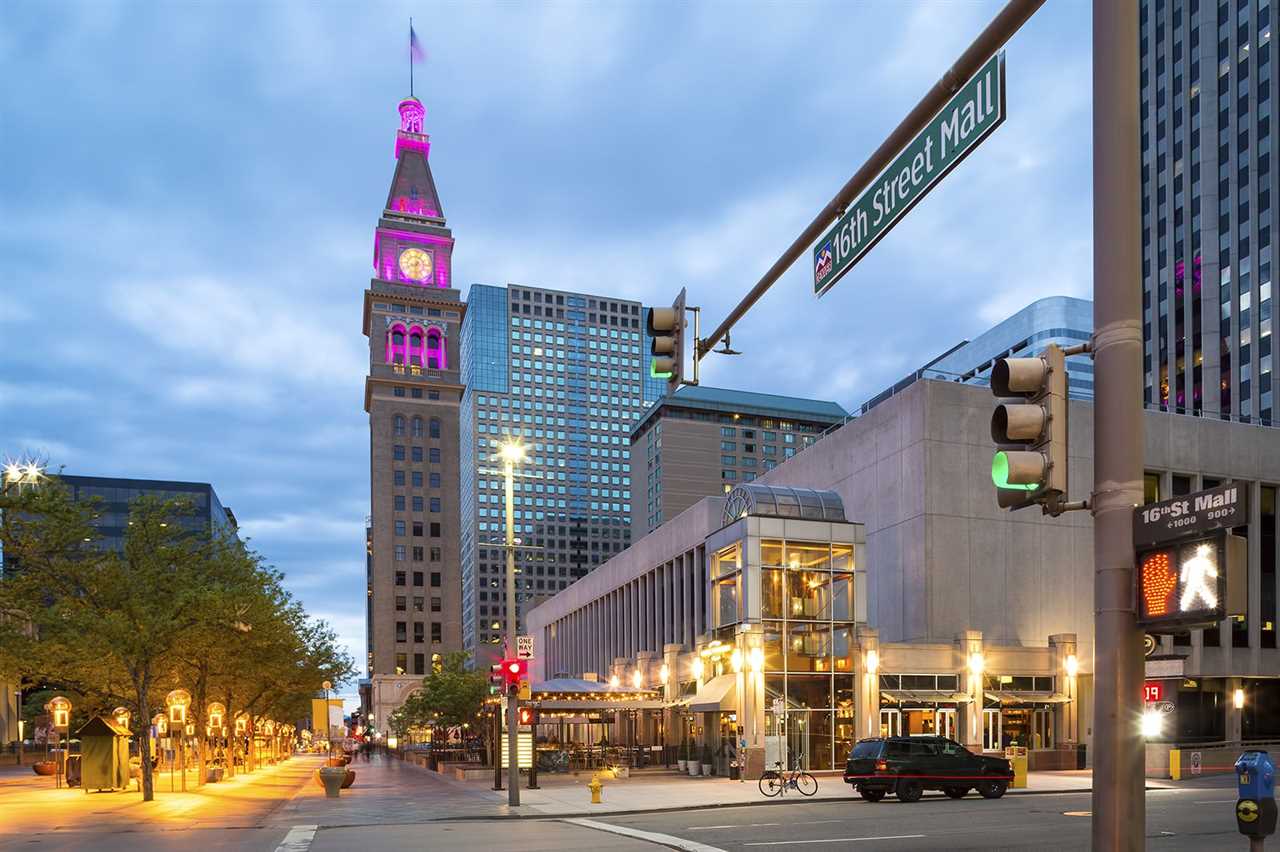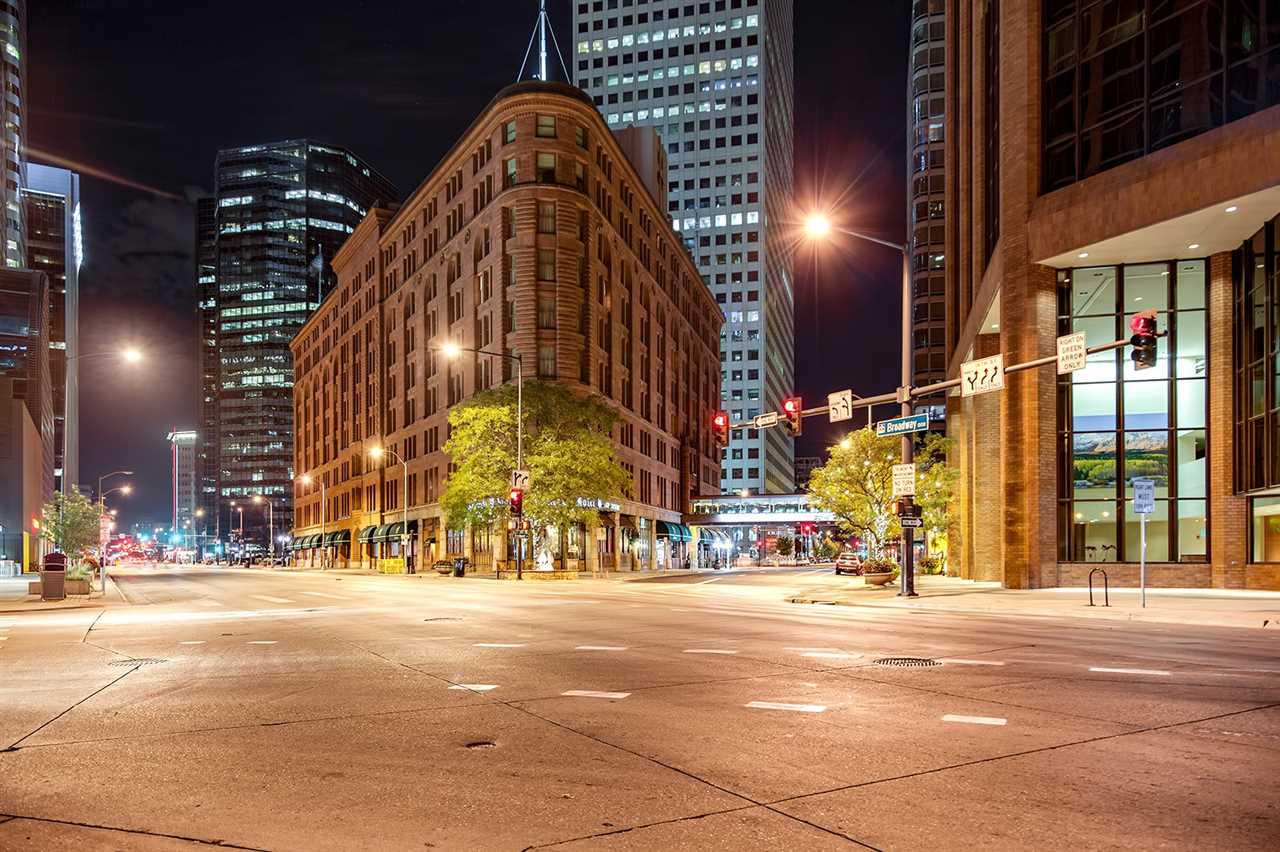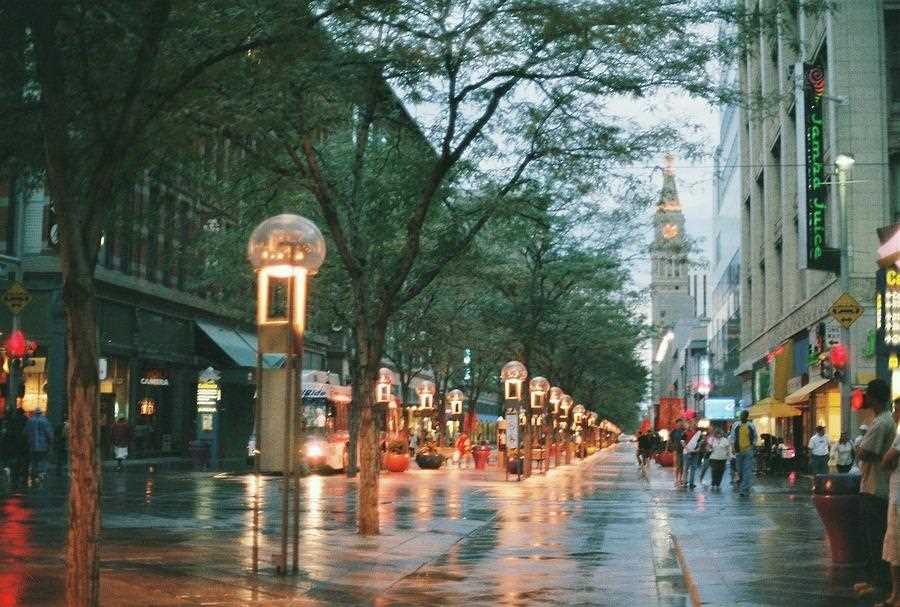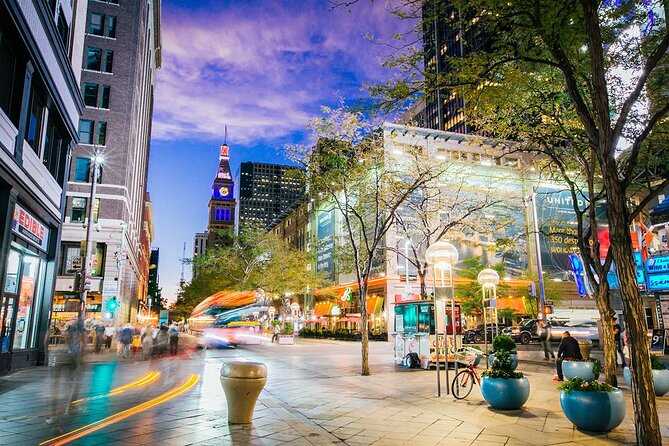
Denver, Colorado is a vibrant city with a rich history and a diverse culture. One of the defining characteristics of Denver is its unique and iconic streets. From the bustling downtown area to the charming residential neighborhoods, the streets of Denver have a charm of their own.
One of the most famous streets in Denver is the 16th Street Mall. This pedestrian mall stretches for over a mile and is lined with shops, restaurants, and entertainment options. It’s a popular destination for both locals and tourists alike, offering a wide range of activities and attractions.
Denver is also home to a number of charming residential streets, such as Pearl Street in the Platt Park neighborhood. Lined with beautiful historic homes and tree-lined sidewalks, Pearl Street is a picturesque and peaceful retreat in the heart of the city.
Whether you’re exploring the bustling downtown area or strolling through the charming residential neighborhoods, the streets of Denver offer something for everyone. Each street has its own unique character and charm, contributing to the vibrant and diverse culture of the city.
Exploring Denver City Streets
Denver, Colorado is a vibrant city with a rich history and an exciting urban landscape. The city’s streets are a microcosm of its diverse culture, offering a variety of experiences for both locals and tourists alike.
One of the most famous streets in Denver is the 16th Street Mall, a pedestrian-friendly promenade that is lined with shops, restaurants, and entertainment venues. This bustling street is the perfect place to grab a cup of coffee, do some shopping, or simply people-watch. The free MallRide shuttle bus runs up and down the street, making it easy to explore the entire stretch.
Another notable street in Denver is Larimer Square, which is one of the city’s oldest and most charming blocks. This historic street is lined with Victorian-era buildings that now house trendy boutiques, galleries, and restaurants. It’s a great place to spend an afternoon browsing unique shops and enjoying a delicious meal.
If you’re looking for a lively and eclectic street, head over to South Broadway. This long stretch of road is home to a vibrant mix of vintage clothing stores, thrift shops, record stores, and live music venues. It’s a great place to discover hidden gems and experience Denver’s alternative culture.
For a taste of Denver’s art scene, consider visiting Santa Fe Drive. This street is known for its numerous art galleries, studios, and sculptures. Every first Friday of the month, the street comes alive with the First Friday Art Walk, where visitors can explore the galleries, meet local artists, and enjoy live performances.
Lastly, don’t miss out on exploring Colfax Avenue, which is the longest commercial street in the United States. This street is teeming with history and boasts a mix of businesses, including quirky shops, dive bars, and music venues. It’s a fascinating street to stroll along and soak in the city’s unique character.
Whether you’re a history buff, a foodie, or someone who simply enjoys exploring new places, Denver’s city streets have something to offer everyone. So put on your walking shoes and get ready to discover the wonders of Denver’s vibrant street life.
| Street | Description |
| 16th Street Mall | A pedestrian-friendly promenade lined with shops, restaurants, and entertainment venues. |
| Larimer Square | A historic street with Victorian-era buildings that now house trendy boutiques, galleries, and restaurants. |
| South Broadway | A lively street with a mix of vintage clothing stores, thrift shops, record stores, and live music venues. |
| Santa Fe Drive | A street known for its numerous art galleries, studios, and sculptures, with a monthly First Friday Art Walk. |
| Colfax Avenue | The longest commercial street in the United States, filled with quirky shops, dive bars, and music venues. |
Landmarks and Attractions

Denver, Colorado is home to a variety of landmarks and attractions that draw visitors from around the world. One of the most iconic landmarks in the city is the Denver Union Station. This historic train station has been beautifully restored and now serves as a hub for transportation, dining, and shopping. Visitors can explore the station’s unique architecture and enjoy a meal at one of the many restaurants.
Another popular attraction in Denver is the Denver Art Museum. This impressive museum features a wide range of art collections from around the world, including works by renowned artists such as Claude Monet and Vincent van Gogh. The museum also offers interactive exhibits and educational programs for visitors of all ages.
If you’re looking for outdoor adventure, you won’t be disappointed in Denver. The city is located near the Rocky Mountains, making it a perfect destination for hiking, skiing, and other outdoor activities. One of the most popular outdoor attractions in Denver is Red Rocks Park and Amphitheatre. This natural amphitheater is renowned for its stunning rock formations and is a popular venue for concerts and events.
No visit to Denver would be complete without a visit to the Denver Botanic Gardens. This oasis in the city is home to a stunning array of plants and flowers from around the world. Visitors can explore the gardens on their own or take a guided tour to learn more about the various plant species.
In addition to these attractions, Denver also offers a vibrant dining scene, with a wide range of restaurants serving up diverse cuisines. From farm-to-table eateries to international dining experiences, there’s something to satisfy every palate.
Whether you’re interested in history, art, outdoor activities, or culinary delights, Denver has something for everyone. Plan your visit to this vibrant city and discover all it has to offer.
Suburbs

Denver, Colorado is surrounded by a number of charming suburbs that offer a different pace of life compared to the city center. These suburbs provide a sense of community, access to nature, and a quieter atmosphere while still being close to all the amenities that Denver has to offer.
1. Aurora

Aurora is the third-largest city in Colorado and is located just east of Denver. This suburb offers a diverse and vibrant community with a variety of shops, restaurants, and parks. With easy access to major highways, residents of Aurora can easily commute to downtown Denver or anywhere else in the metro area.
2. Lakewood

Lakewood is situated to the west of Denver and offers a mix of suburban and urban living. This suburb is home to beautiful parks, golf courses, and a vibrant arts scene. Lakewood also provides easy access to the Rocky Mountains, making it an ideal location for outdoor enthusiasts.
These are just a couple of examples of the many suburbs surrounding Denver, each with its own unique charm and character. Whether you’re looking for a quiet suburban retreat or a lively community with a strong sense of identity, the suburbs of Denver have something to offer for everyone.
Denver’s Street Art Scene

Denver, Colorado is home to a vibrant and thriving street art scene. The city’s streets are adorned with colorful murals, graffiti, and unique art installations, creating a vibrant and visually stunning urban landscape.
Denver’s street art scene has gained international recognition and has become a major attraction for art enthusiasts from around the world. The city’s commitment to promoting and supporting street art has made it a haven for both local and international artists.
One of the most iconic areas for street art in Denver is the RiNo Art District. Known for its industrial charm, this neighborhood is a hub for creativity and artistic expression. The streets of RiNo are filled with massive murals, showcasing a wide range of styles and themes.
One notable artist who has left their mark on Denver’s streets is Shepard Fairey, the creator of the famous “Hope” poster for Barack Obama’s presidential campaign. Fairey’s artwork can be spotted throughout the city, adding a touch of political and social commentary to the landscape.
Graffiti vs. Street Art

There is a distinction between graffiti and street art, although the terms are sometimes used interchangeably. Graffiti typically refers to unauthorized and often illegal markings, while street art is more often commissioned and legal. However, both forms of artistic expression can be found throughout Denver’s streets.
Denver’s street art scene is constantly evolving and changing. Artists from around the world come to the city to leave their mark, resulting in a dynamic and ever-changing outdoor gallery. The city also hosts annual street art festivals and events, further contributing to the rich cultural tapestry of Denver.
If you find yourself in Denver, be sure to take some time to explore the city’s streets and discover the incredible street art that is on display. From vibrant murals to thought-provoking installations, Denver’s street art scene offers a unique and immersive experience for art lovers and curious visitors alike.
Denver’s Mountainous Backdrop

Denver, Colorado is known for its stunning mountainous backdrop. Located in the foothills of the Rocky Mountains, the city offers breathtaking views and outdoor recreation opportunities.
The Rocky Mountains

With peaks reaching heights of over 14,000 feet, the Rockies offer a haven for outdoor enthusiasts. Visitors can enjoy activities like hiking, mountain biking, rock climbing, and even skiing or snowboarding in the winter months.
The Mount Evans Scenic Byway

One of the best ways to experience Denver’s mountainous backdrop is by driving along the Mount Evans Scenic Byway. This scenic road takes you up to the summit of Mount Evans, one of Colorado’s highest peaks.
As you wind your way up the mountain, you’ll be treated to panoramic views of the surrounding peaks and valleys. The road is lined with pull-off points where you can stop and take in the breathtaking scenery.
At the summit, you’ll be rewarded with a bird’s-eye view of Denver and the surrounding area. On a clear day, you can see for miles and take in the expansive beauty of the Rocky Mountains.
Whether you’re driving along the Mount Evans Scenic Byway or simply gazing at the mountains from the city, Denver’s mountainous backdrop is truly a sight to behold. It adds to the city’s charm and offers endless opportunities for exploration and adventure.
The Future of Denver’s Streets

One of the key areas of focus is the implementation of new technology. Smart traffic lights, for example, can help reduce congestion by adjusting the signal timings based on real-time traffic conditions. This not only saves commuters time but also reduces carbon emissions from idling vehicles.
Additionally, the city is exploring the use of autonomous vehicles. Self-driving cars have the potential to greatly improve traffic flow and reduce accidents. With advanced sensors and communication systems, these vehicles can make split-second decisions to optimize their route and avoid potential hazards.
Another aspect being considered is the promotion of alternative modes of transportation. Denver has made significant investments in bike lanes and pedestrian infrastructure, making it easier and safer for residents to choose walking or cycling as their preferred mode of transport. This not only reduces traffic congestion but also promotes a healthier and more sustainable lifestyle.
Furthermore, Denver is actively investing in public transportation. The expansion of light rail lines and the improvement of bus services are a priority. By providing efficient and reliable public transportation options, the city aims to reduce the dependency on private vehicles and alleviate congestion on the roads.
The future of Denver’s streets looks promising. Through the implementation of new technologies, the promotion of alternative transportation modes, and the expansion of public transportation, the city is taking steps towards building a more connected, efficient, and sustainable urban environment.

I am a mural enthusiast and a fervent admirer of street art. Rather than creating murals myself, I am passionate about collecting them. My love for street art knows no bounds. I am dedicated to curating and cherishing these artworks that grace the streets. My collection stands as a testament to my profound appreciation for this form of artistic expression.
read about me



